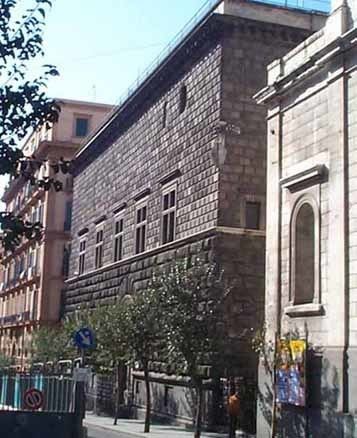Established 1888 (1888) Opened 1490 | Construction started 1464 Function Palace, Museum | |
 | ||
Location Via Duomo, 228, Napoli, Italy Similar Pio Monte della Misericordia, Veterinary Anatomic Museum, Artistic Industrial Museum, Palazzo Marigliano - Naples, Archbishop's Palace Profiles | ||
The Museo Civico Filangieri (Filangieri Civic Museum) is an eclectic collection of artworks, coins, and books assembled in the 19th century by Gaetano Filangieri, Prince of Satriano, and endowed to the city of Naples as a museum. The collection is housed in the Princes imposing 15th century Palazzo Cuomo (or Como) on Via Duomo, just north of the intersection of Corso Umberto, and adjacent to the church of San Severo al Pendino.
History
The Cuomo Palace (Italian: Palazzo Cuomo) was built in a Renaissance style, with an ashlar stone facade, during 1464 to 1490 by the rich merchant Angelo Como (or Cuomo). The architect was the Florentine Giuliano da Maiano. It was sold in 1587 and was incorporated into an adjacent monastery. In 1881-82, because of the demolition and construction during the urban renewal of Naples, the entire building was dismantled and moved back some 20 meters to widen the street. The museum was inaugurated in 1888 by Gaetano Filangieri Junior (1824–92), principe di Satriano. Much of the collection was destroyed by the retreating German troops during September 1943. Since then works from other Neapolitan sites were subsequently incorporated to form a new collection. In recent decades, the museum has often been plagued with extended closures. Many of the exhibits are temporarily on display in the Maschio Angioino.
Among the artists with paintings in the Museum are Jusepe de Ribera, Bernardino Luini, Fedele Fischetti, Francesco Solimena, Francesco Jerace, Lorenzo Vaccaro, Filippo Tagliolini, Gesualdo Gatti, and Luca della Robbia.
